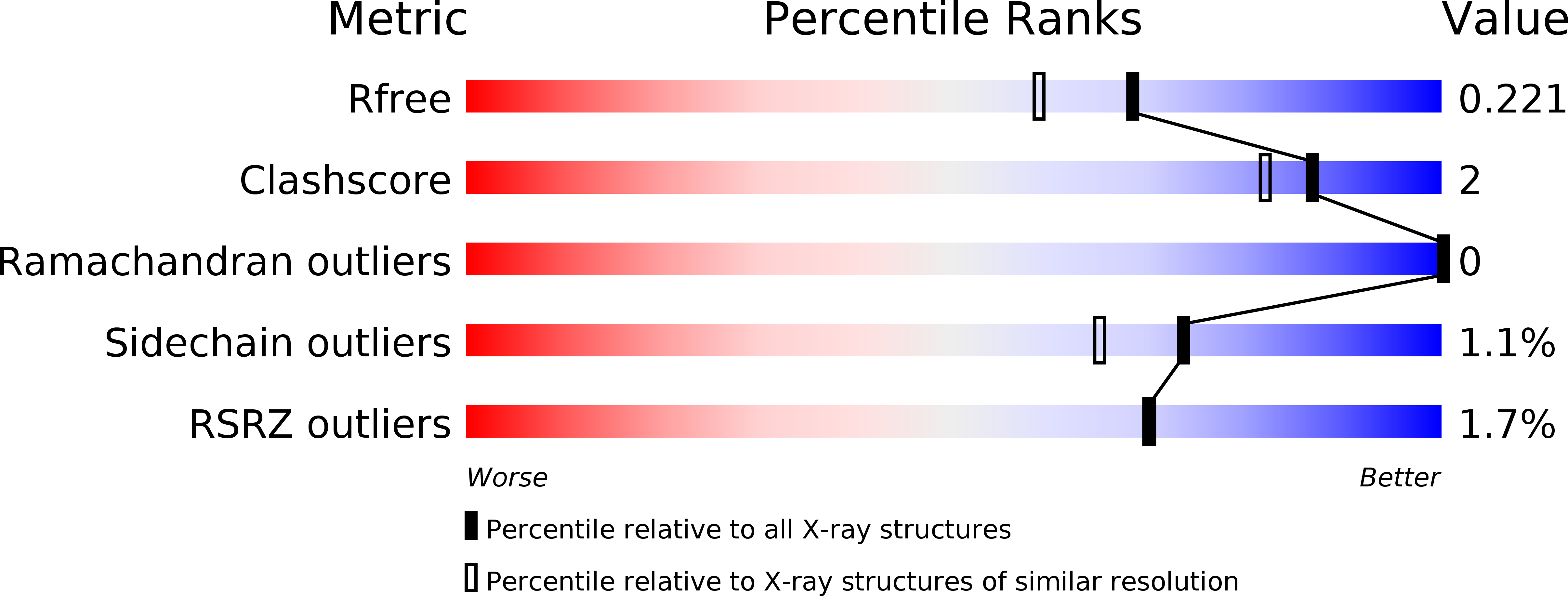
Deposition Date
2012-10-03
Release Date
2013-06-05
Last Version Date
2024-10-30
Entry Detail
PDB ID:
4HEF
Keywords:
Title:
Structure of avibactam bound to Pseudomonas aeruginosa AmpC
Biological Source:
Source Organism:
Pseudomonas aeruginosa (Taxon ID: 208964)
Host Organism:
Method Details:
Experimental Method:
Resolution:
1.86 Å
R-Value Free:
0.20
R-Value Work:
0.17
R-Value Observed:
0.17
Space Group:
P 21 21 21


